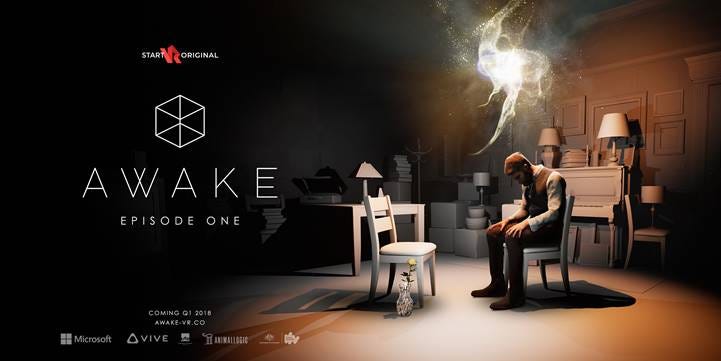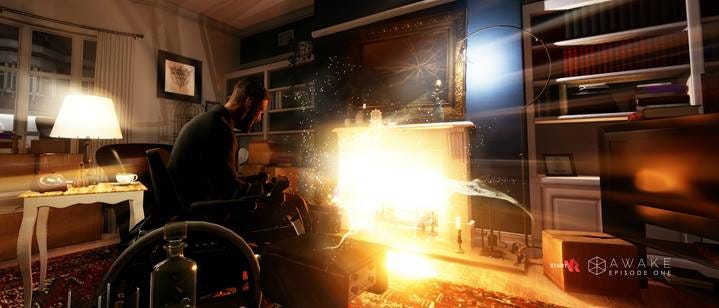
Storytelling is something humans have always done. It’s a compulsion. Tracing the effect of technology on storytelling — from the discovery of paint to the rise of moveable type to the advent of the motion picture — is the kind of subject you could probably go get a doctorate in. Every new form of technology allows us to experience stories on a different scale or intensity, and in the dawning age of VR these experiences are becoming increasingly immersive, intimate, and potentially impactful.
AWAKE is a good example of this potential. An episodic, interactive dramatic series which unfolds around you like any good scripted show should, AWAKE is designed to fully use VR as a framing mechanism, a storytelling device, a stage, and maybe a mirror. While no real story answers were provided in the playing of the first episode, or the cut of it I experienced at SXSW, many questions were raised, not the least of which were — how far can this experience go?
A lot of VR is kind of trippy fun. The knowledge of where you are in actual space versus is always at delightful odds with the input your brain is getting. AWAKE presses at this disconnect in subtler ways, playing with the distortion of time as well as place.
The demo presents a series of indoor scenes that play out around you and give you a glimpse into the characters you’ll be following through the story. Glowing orbs of light appear for you to interact with, and pull you bodily through the space when your own movement reaches the end of its efficacy — to travel all the way across a room, you would wander out of the faint blue outline on the ground that marks your safe zone — and environmental cues organically guide you to find those orbs, those moments of progression.
Get Amanda Schuckman’s stories in your inbox
Join Medium for free to get updates from this writer.
SubscribeSubscribe
A particularly effective moment that stood out for me was when, after examining piles of detailed, scrawling notes heaped on tables and watching our hero, Harry, have something of a breakdown over an photograph in his lap, a fluttering over my shoulder made me turn. There was a bird in a cage. I was flabbergasted, and delighted. It led me to a memory, a scene between Jake McDorman and Analeigh Tipton that felt sweet and lived in but incomplete. There are a lot of pieces missing, and as episodes release, the full scope of how many pieces there are, and what role you, as the viewer and player, occupy among them is, will be revealed.

The details are astounding. The design of AWAKE is that special blend of charming and unsettling that games like Bioshock have tapped into so successfully in the past, seeming extremely specific and only vaguely familiar, sometimes in the same instant. It’s dreamlike. It’s a quality that threads the entire experience so far, and that’s intentional. Light turns into shapes turns into new scenes, all with an uncanny fluidity that mimics the way people move through actual dreams — or traumatic memories. Series Creator and Director, Martin Taylor, spent years looking for ways to approach that very concept, trying to convey the nature of dreams and play with the human perception of time, and in VR has found a medium that allows him to do so with unprecedented success. I was lucky enough to get to sit down with him at SXSW after my demo of the first episode, and get deeper into what AWAKE aims to be and how it’s gotten to where it is. View the series teaser and interview below:
No Proscenium is a labor of love made possible by our generous Patreon backers: join them today!
In addition to the No Proscenium web site, our podcast, and our newsletters, you can find NoPro on Twitter, Facebook, YouTube, Instagram, in our Facebook community Everything Immersive, and on our Slack forum.





















Discussion